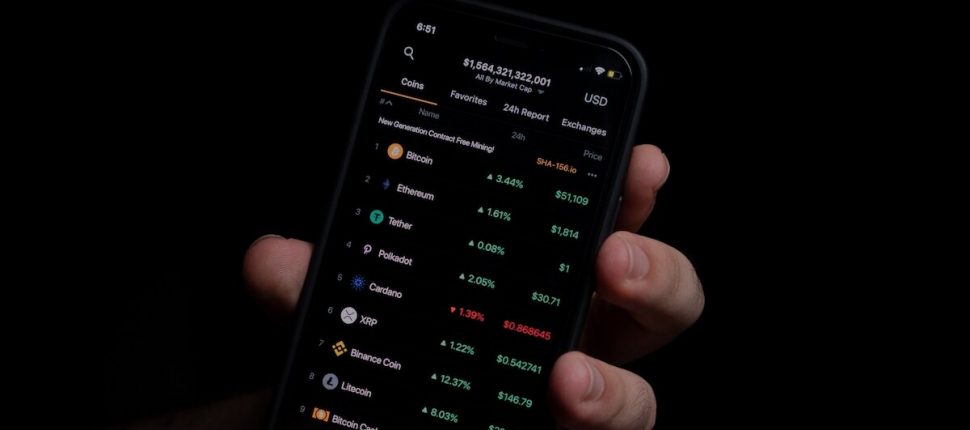- >Best Crypto Exchanges
- >Uniswap Exchange Review
Uniswap Overview
- Easily swap ERC-20 tokens without needing to create an account or verify identity
- Provide liquidity to the protocol and earn high interest returns
- Governance of protocol voted on by those who hold UNI tokens
Uniswap Pros & Cons
Pros
Swap all ERC-20 tokens
Get high interest returns for providing liquidity
Introduction of UNI token helps develop protocol’s future
No identity verification or sign up required to use the app
Cons
Gas fees/transaction costs can be very high
Risk of impermanent loss in liquidity pools
Supported Wallets on Uniswap
Uniswap Exchange supports a wide range of cryptocurrency wallets including the following:
- MetaMask
- Coinbase Wallet
- Fortmatic
- Portis
How to Connect Your Wallet to Uniswap
It is really easy to connect your wallet to Uniswap by following these steps:
- Go to app.uniswap.org
- Click “Connect to a Wallet” in the upper right corner
- Select your wallet of choice
- Sign into your wallet if not already
- Verify that you want to connect your wallet to Uniswap
- Done! You are now connected and can begin using Uniswap Exchange
What You Can Buy on Uniswap
You can buy an almost endless number of coins and tokens on Uniswap, as it supports all ERC-20 compatible assets. Here are some of the most popular assets you can buy on Uniswap:
- Ethereum (ETH)
- Basic Attention Token (BAT)
- Enjin Coin (ENJ)
- Chainlink (LINK)
- Yearn.finance (YFI)
- Tether (USDT)
- USD Coin (USDC)
- Dai (DAI)
- Synthetix (SNX)
- Uniswap (UNI)
- Wrapped Ether (WETH)
- Wrapped Bitcoin (WBTC)
Is Uniswap Safe?
Uniswap Exchange is extremely safe, as it operates as a decentralized exchange and liquidity pool and is built on Ethereum, meaning it has the same security as the Ethereum blockchain. Since it is decentralized there is no central server to hack and gain access to users’ funds. Whatever funds you provide to a liquidity pool are locked by a smart contract and cannot be removed by any account other than your own, so a hack would be difficult as it would require the hacker to get each individual’s account information to pull anything from the pools. As long as you keep your wallet safe, Uniswap Exchange is safe to use.
The only potential issues you may run into using Uniswap Exchange are related to user errors, as the code and smart contracts have been thoroughly audited and have tested safely.
There is also the potential for impermanent loss of assets when you provide liquidity to a pool, and this is true of all liquidity pool protocols, not just Uniswap. For more information on impermanent loss check out this article.
What are Uniswap Exchange Fees Like?
Uniswap only charges a 0.3% fee for all swaps, and unlike most centralized exchanges, this fee does not go to Uniswap but instead goes to the liquidity providers as their incentive for providing assets to the protocol.
Gas fees on Uniswap, meaning the fees required to send a transaction on the Ethereum blockchain, are a separate cost, and can be quite high depending on network congestion. There is no way around these fees and Uniswap has no control over them. Transaction fees for swaps are lower than for interacting with liquidity pools, whether depositing or withdrawing.
Best Features of Uniswap
As you might expect, one of the best features of Uniswap Exchange is its swap feature. You can easily swap any two Ethereum assets (ERC-20) with just a few simple clicks. The swap feature is extremely convenient as it allows you to trade assets without registering for an exchange account or having your identity verified.
Liquidity pools are the backbone of Uniswap Exchange and one of the biggest draws for those looking to earn interest on their assets. You can provide liquidity pools tokens by depositing an equal dollar amount of two ERC-20 tokens (USDT and ETH for example), and in return you receive a share of the fees earned by that pool, so the more swaps there are between USDT and ETH the more fees you will receive. Fees are paid in proportion to your contributions, so the more you have deposited the higher your returns.
Potential Downsides of Uniswap
The number one issue with Uniswap for most people is likely going to be the high fees related to using the Ethereum network.
This isn’t a criticism of Uniswap necessarily but since Uniswap is exclusively ERC20 tokens you’re going to run into some high fees. Ethereum is simply so popular these days that the network gets very expensive to use.
There are alternatives (such as the BNB-based PancakeSwap) but the time being any DEX that’s built on Ethereum is going to likely get pretty expensive.
Frequently Asked Questions About Uniswap Exchange
Uniswap Exchange is a protocol on Ethereum used for swapping ERC-20 compatible tokens. Liquidity for the exchange is provided by users and they earn the fees the protocol takes, Uniswap as an exchange earns no fees, unlike centralized exchanges such as Binance. The Uniswap token (UNI) is used for governance of the protocol.
Yes, Uniswap Exchange is an open-source project, the code can be looked at by anyone interested. Some other exchanges on the market, such as SushiSwap, are essentially just Uniswap’s code by another name.
For every token swap on Uniswap Exchange there is a 0.3% fee collected and this fee is split by the liquidity providers in proportion to their liquidity contributions. Swapping fees are immediately deposited into liquidity reserves. This increases the value of liquidity tokens, functioning as a payout to all liquidity providers proportional to their share of the pool. Users can collect their fees by burning liquidity tokens to remove a proportional share of the underlying reserves.
Uniswap has no control over the fees paid on the network, as it is Ethereum that requires gas for transactions. Network congestion and current ETH prices affect fees paid. You can check ETH gas station for the current prices required to complete transactions in order to potentially pay less during lower use times. Providing liquidity to a Uniswap pool is a slightly costlier transaction because you are executing a more complex smart contract which means more gas fees. The only fees Uniswap controls are the 0.3% fees for swaps, which is paid out to liquidity providers. Uniswap Exchange receives no fees for trades.
Originally, Uniswap was just a decentralized exchange protocol that allowed users to swap or provide liquidity to pools, but after its success the development team decided to introduce the Uniswap Token which goes by the ticker of UNI. UNI is used to vote on changes to the protocol and any other governance. Users can vote themselves or delegate their vote to another user they trust.
Uniswap Exchange can take so long because of network congestion. It is possible the fee you paid is too low and the transaction is going to fail, or it will take a long time to be included in the block and be verified. If you want your transactions to go faster, you must pay a higher gas fee when sending transactions.

